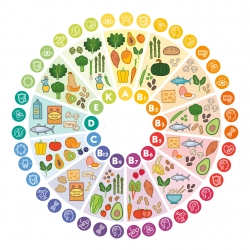We sell selected honey products from the heather.
Let yourself be surprised by the extraordinary flavors of our honey.
Whether you choose our heathland, our immengold, our woodland or our rape blossom, you will feel the color of the heath, the smell of the forest, a fresh summer breeze or the golden yellow field.
How is honey produced?
According to the general German Food Ordinance, honey is "a foodstuff produced from honeybees from the nectar of flowers or honeydew". The starting point is flowering plants, which are also often referred to as bee flowers. The so-called "Siebröhrensaft" (transport substance of plants) is ejected from the bee flowers as a nectar, thereby to ensure insects for the pollination of one's own plant, in order to be able to reproduce thereby botanisch.
Why is nectar so popular with insects?
Not only the attractants of the nectar, for example, bees are attracted, but rather nectar also means stock. Nectar is collected by the bees to ensure the stocking of food for the winter.
In addition, there is also the honey tree, which is separated from various tree species. This honeydew is then absorbed by aphids, which can not fully utilize the dew, so they leave the majority of them again. After that, the bees are collected and put into the beehive and stored. This is where the famous Waldhonig (Waldtracht) comes into being.
But how exactly does honey come from? Nectar alone is not enough. Honey bees have a so-called honey stomach, in which the nectar is mixed with enzymes, processed and fermented. The enzyme invertase plays a special role in the process of the production of honey because it causes the breakdown of sugar molecules (sucrose) into glucose and fructose. In the further process, the glucose is converted into hydrogen peroxide and glucanic acid by the enzyme glucose oxidase. Furthermore, the water content (to a maximum of 20%) of the nectar is reduced to make it more durable. The general German honey ordinance also sets a guideline for this. According to this guideline, German honey may have a maximum water content of 21%. Heidehonig is an exception, because this honey has a water content of 21.5%.
|
|
|
 |
|
You have the possibility to book us as a sales and handicraft stand.
For your event you can book one of our sales and handicraft stands. Up to 30 children can be spanned at the same time and thus receive information about nature in a playful way.
(Bees), honeycombs and honey in a frame are brought as objects of observation. Only a small package will be payable for the personnel costs and a travel allowance is due, provided the costs do not bear through the sale.
For initial events, a separate offer can be made. |
|
|
|
|
|
|
|
|
Which substances contains honey 🍯?
More than 240 natural substances have been found in beehive, including many amino acids, vitamins, minerals and trace elements. Some of these are mentioned by way of example:
Minerals and trace elements: sodium, potassium, magnesium, calcium, iron, manganese, boron
Enzymes: invertase, glucose oxidase, diastase
Amino acids: alanine, proline, aspartic acid, glycine, proline |
|
|
|
|
|
|
 |
|
Vitamins: C, B2, B6, niacin, pantothenic acid
The 24 types of sugar play a special role because they account for the largest share, and because sugar is one of the carbohydrates, which in turn play an important role in human nutrition. |
|
|
|
|
|
|
 |
|
The rough composition of honey can be represented as follows (round):
72% Easy to use
18% water
8% multi-sugar
2% Other substances
But so much sugar is not healthy at all?
Sugar is not equal to sugar.
First of all, one must distinguish between single and multiple sugars. The normal household sugar, which is obtained from sugar beet or sugar cane, is sucrose, which is a multiple sugar (polysaccharide).
However, multiple sugars must be split up by the body first. On the other hand, simple sugars, such as fructose and glucose, can be directly utilized by the body without weighing the digestive system.
|
|
|
|
|
|
|
|
|
Honey contains predominantly simple sugars, for example fructose, glucose, maltose or melezitose, and is therefore suitable as a fast but gentle energy dispenser. Ideal for athletes, people with strenuous physical work, sick and well-being.
Of course, an excessive enjoyment of honey can ultimately be unhealthy (like anything that is exaggerated). |
|
|
|
|
|
|
|
|
By the way, honey is not unhealthy, like sweets or other sweets. This is due to the content of single and multiple sugars as well as the bactericidal effect. This means honey inhibits bacterial growth. Its content of phosphorus and calcium makes it healthy for bones and teeth. |
|
|
|
|